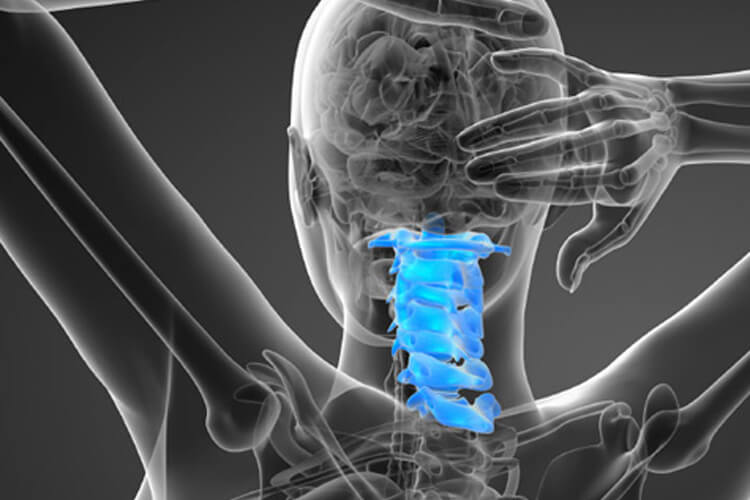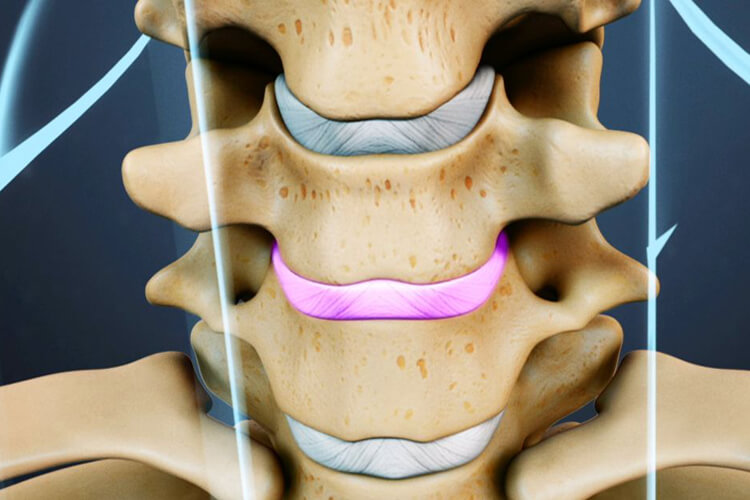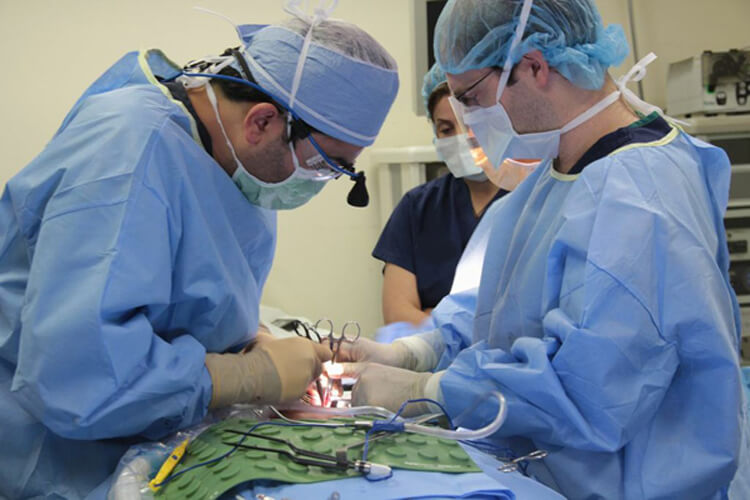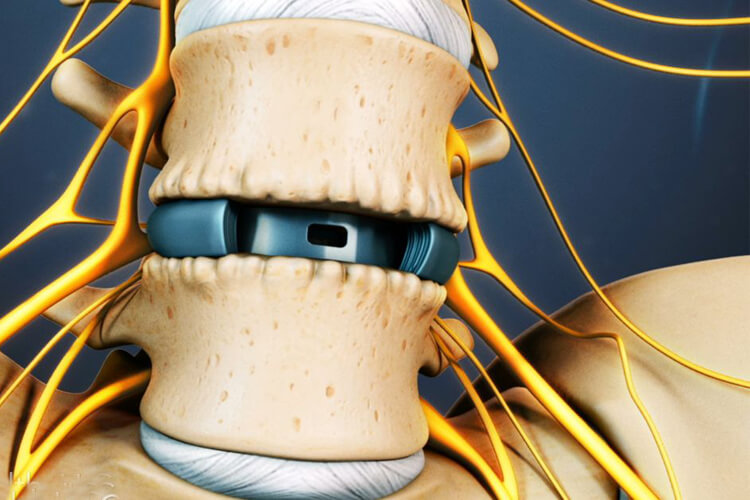The neck holds the upper part of your spine and is part of a long, flexible column known as the spinal column. There are 24 connected bones (or vertebrae) that comprise this column. The seven bones in the neck are known as the cervical spine. Each vertebra is separated by a cushion called an intervertebral disc. The outer ring of the disc is the annulus and the nucleus is the spongy center. The annulus acts as a gasket with the purpose of keeping the nucleus moist. Due to their soft, gelatinous centers, the intervertebral discs serve as shock absorbers, preventing the rubbing of onevertebra against another. These cushions also allow flexibility of the cervical spine so that the head can be turned freely.
The spinal canal houses the nerve bundles and spinal cord. The cord is bathed in cerebrospinal fluid, or CSF. This fluid circulates through the spine and brain, and is covered by several protective membranes. At each level, or building block of bone, a pair of spinal nerves exits-one to the left, and one to the right, through a small opening called a foramen. These nerves relay messages to and from the brain, allowing for movement of our bodies and our ability to feel sensations. The nerves that exit through the cervical spine affect the neck, arms, shoulders, and hands. In addition, ligaments and muscles are attached to vertebrae and support nerves and spinal cord.





